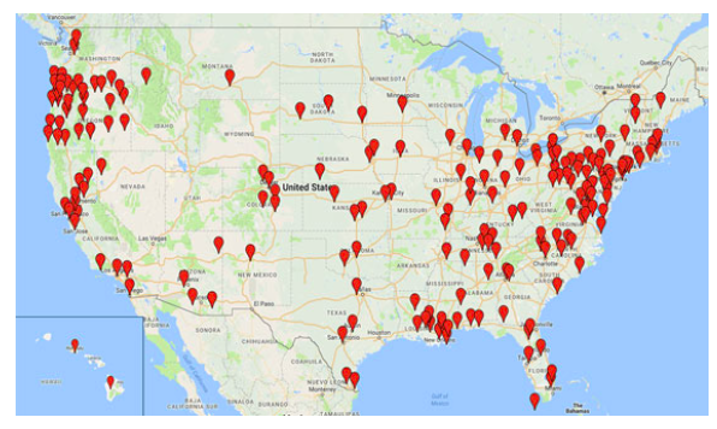Major Projects
RNR (Risk-Need-Responsivity) Simulation Tool

The RNR (Risk-Need-Responsivity) Simulation Tool is a translational tool suite that operationalizes Andrews and Bonta’s RNR framework provides assistance to treatment and criminal justice staff in improving matching of services and program quality. This Tool is a web-based, decision-support tool that guides agencies in allocating treatment and programming resources based on the population.
Principal Investigator: Faye Taxman, Ph.D.
Co-developers: James Byrne, Ph.D. (University of Massachusetts, Lowell); April Pattavina, Ph.D. (University of Massachusetts, Lowell); Avinash Bhati, Ph.D. (Maxarth, Inc.); Stephanie Maass, Ph.D. (Norwich University); Erin Crites, Ph.D. (Colorado Department of Corrections); Michael Caudy, Ph.D. (University of Central Florida)
Project Manager: Amy Murphy
Funding Source: BJA, 2009-DG-BX-K026
 Study Location(s): Over 200 sites have implemented the RNR Simulation Tool (various parts) including the Delaware Department of Corrections, Hidalgo (TX) County Community Supervision and Corrections Department, and the Prince William Adult Detention Center, to name a few. The map below illustrates the breadth of the RNR Simulation Tool’s reach.
Study Location(s): Over 200 sites have implemented the RNR Simulation Tool (various parts) including the Delaware Department of Corrections, Hidalgo (TX) County Community Supervision and Corrections Department, and the Prince William Adult Detention Center, to name a few. The map below illustrates the breadth of the RNR Simulation Tool’s reach.
Major Goals: The goal of the RNR Simulation Tool is to operationalize the Andrews and Bonta Risk-Need-Responsivity framework. At the individual level, Assess an Individual matches people to appropriate services based on their risk level, strengths, and needs. At the program level, the RNR Program Tool for Adults allows providers who work with criminal justice clients to conduct an online self-assessment to identify their key features and learn more about how to ensure services are evidence-informed. At the jurisdiction level, Assess Jurisdiction’s Capacity compares the primary needs of a jurisdiction’s clients to the programming that is available. This provides the jurisdiction with crucial information for strategic planning.
Major implementation lessons:
- Many agencies experience challenges engaging treatment provider networks and understanding what programming is available across communities
- Staff need more training to understanding risk and need assessments and how to explain what they mean to clients;
- Important gaps in services can be identified by examining jurisdictional capacity for sub-populations, as well as clients overall
Publications:
Taxman, F.S. & Pattavina, A. (2013). Simulation strategies to reduce recidivism: Risk need responsivity (RNR) modeling in the criminal justice system. New York: Springer.
Murphy, A., Maass, S., Chowdhury, S., & Taxman, F. (2017). Improving Practice: Case Studies from the Field: Reducing Recidivism and Improving Programming in the San Francisco Adult Probation Department. Washington, DC: Bureau of Justice Assistance.
Murphy, A., Maass, S., Chowdhury, S., & Taxman, F. (2017). Improving Practice: Case Studies from the Field: Using Translational Tools to Reduce Recidivism in Hidalgo County, Texas. Washington, DC: Bureau of Justice Assistance.
Taxman F.S. & Murphy, A. & (2017). Community Interventions for Justice Involved Individuals: Assessing Gaps in Programming to Promote Decarceration In M. Epperson and C. Pettus-Davis (ed.), Smart Decarceration: Achieving Criminal Justice Transformation in the 21st Century (pp.193-209). New York, NY: Oxford University Press.
Taxman, F.S. (2014). Second Generation of RNR: The Importance of Systemic Responsivity in Expanding Core Principles of Responsivity. Federal Probation. http://www.uscourts.gov/uscourts/FederalCourts/PPS/Fedprob/2014-09/rnr.html
Taxman, F.S., & Caudy, M. (2015). Risk tells us who, but not what or how: Empirical assessment of the complexity of criminogenic needs to inform correctional programming. Criminology and Public Policy. 14(1): 71–103.
Folk, J., Stuewig, J.B., Blasko, B.L., Caudy, M., Martinez, A.G., Maass, St., Taxman, F.S., & Tangney, J. P. (in press). Do Demographic Factors Moderate How Well Criminal Thinking Predicts Recidivism? International Journal of Offender Therapy and Comparative Criminology
Taxman, F.S. (2015). Supervision in the Post Mass Incarceration Era. Federal Probation, 37: 41-46. www.uscourts.gov/file/18527/download
Caudy, M., Tang, L, Wooditch, A., & Taxman, F.S. (2014) Short-term trajectories of substance use in a sample of drug-involved probationers, Journal of Substance Abuse Treatment, 46(2): 202-213, http://dx.doi.org/10.1016/j.jsat.2013.07.006.
Taxman, F.S., Pattavina, A., & Caudy, M. (2014). Justice Reinvestment in the US: The Case for More Programs. Victims & Offenders, 9(1): 50-75.
Taxman, F.S., Perdoni, M., & Caudy, M. (2013). The plight of providing appropriate substance abuse treatment services to offenders: Modeling the gaps in service delivery. Victims & Offenders, 8(1): 70-93.
Caudy, M., Tang, L., Wooditch, A., & Taxman, F. S. (2013). Short-term trajectories of substance use in a sample of drug-involved probationers. Journal of Substance Abuse Treatment. 46 (2): 202-213.
Taxman, F.S. & Pattavina, A. (2013). Simulation strategies to reduce recidivism: Risk need responsivity (RNR) modeling in the criminal justice system. New York: Springer.
Taxman, F.S. (2014). Second Generation of RNR: The Importance of Systemic Responsivity in Expanding Core Principles of Responsivity. Federal Probation. http://www.uscourts.gov/uscourts/FederalCourts/PPS/Fedprob/2014-09/rnr.html
Key Presentations:
Murphy, A., Toronjo, H., & Taxman F.S. (2018, November). “Different Strokes for Different Folks: Lessons Learned and Applied in Working with Community-based Treatment Providers.” Presented at the American Society of Criminology Annual Meeting, Atlanta, GA.
Murphy, A. & Taxman, F.S. (2017, July). “Program Quality: What Are the Implementation Needs of Programs.” Paper presented at the International Congress on Law and Mental Health, Prague, CZ.
Murphy, A. & Taxman, F.S. (2016, April). “What Have We Learned from 472 Programs about Quality and Stability?” Presented at the National TASC Conference on Drugs, Crime, and Reentry,” Chicago, IL.
Murphy, A. (2016, March). “RNR Simulation Tool.” Presented at the Statewide Recidivism Reduction Forum, Washington, DC.
Maass, S., Murphy, A., Toronjo, H., & Taxman, F.S. (2014, August). “The RNR Simulation Tool—Moving Risk-Need-Responsivity Research into Practice in Community Corrections.” Presented at the American Probation and Parole Association 39th Annual Training Institute, New Orleans, LA.
